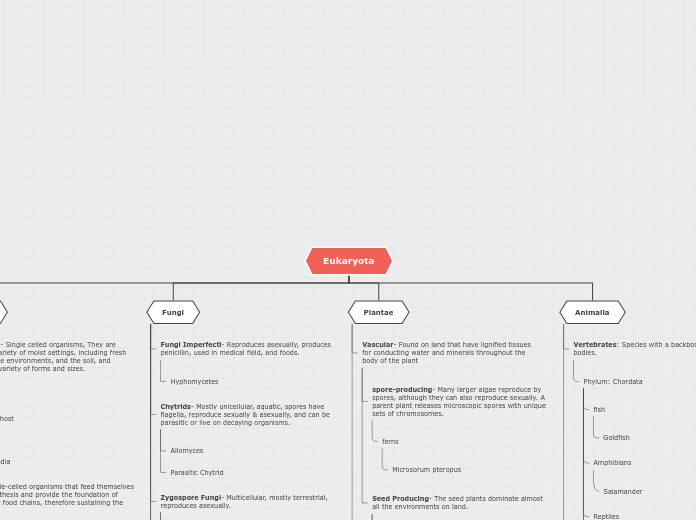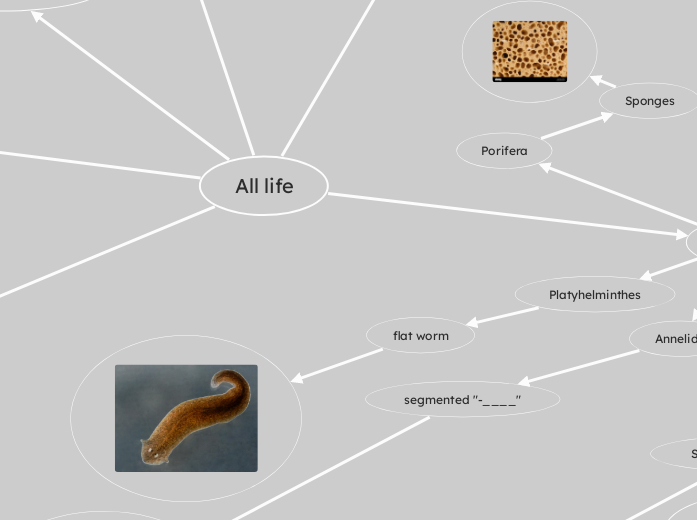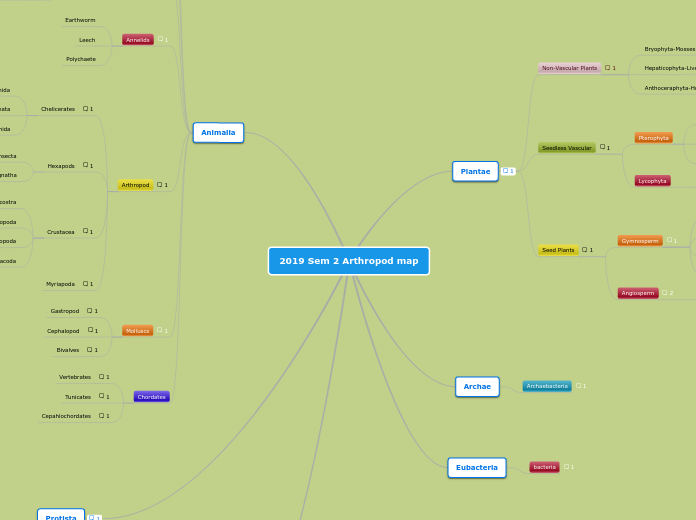av Evangelina Willcock 3 år siden
431
Diversity Mind Map
Eukaryota is a domain of organisms that includes Protista, Animalia, and Plantae. Protista consists of single-celled organisms like protozoans and algae. Protozoans thrive in moist environments, using structures like pseudopodia, flagellum, or cilia for movement, and some require a host.









